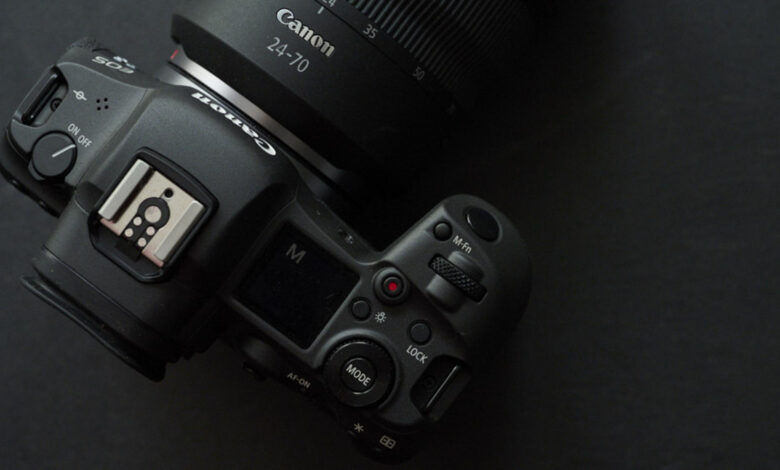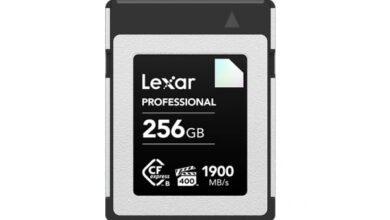Has camera technology passed the point where most photographers actually need it?

With the plethora of new camera features manufacturers have been rolling out in recent years, the question is, “How much more do we really need?”
In the seven-plus years I’ve written for this site, I’ve had the opportunity to ramble on about a myriad of topics. Some are better than others. One particular fact that became apparent early on, and that probably won’t surprise you, is that gear articles consistently get more clicks than any other topic. That’s not surprising. People, myself included, love to rave about new technology. There’s also a persistent misconception that camera manufacturers are in no hurry to dispel: that newer cameras mean better photos. Of course, this is nonsense. You don’t think the Sistine Chapel is any less valuable because it wasn’t made with modern construction equipment and painting processes. So why think that the aesthetic value of a photograph is in any way directly tied to the tools used to make it?
Still, the insatiable hunger for more and more content about the gear that can change your career remains. And, as someone who writes about the world of photography and film, it’s part of my job to write about new toys as they hit the market. So while I personally try to avoid talking about gear when possible in favor of articles focused on running a successful business or improving your craft, I still find myself regularly writing about the latest and greatest in the new breed of gadgets.
By the way, I’m not complaining. Today’s cameras, from a variety of brands, are truly capable of incredible feats that, in years past, we thought were fan fiction. It’s a privilege to test new gear, to know what’s coming, and to pass that information on to our readers. So, as a photographer and a tech writer, I hope that manufacturers continue to raise the bar on still photography specs. That can only be a good thing. But today, I want to think about things from the perspective of a buyer looking to make the right investment for their business.

Something interesting has happened in recent years. Both because I am a professional photographer and director, and because I write for Fstoppers, I often get asked which camera I will suggest them buy. Sometimes it’s just a friend looking for a new hobby. Or someone going on vacation and looking for something to capture their spouse and kids on their trip. Other times it’s someone just starting out in their career and looking for a serious workhorse to help them run their business. But, in all of these cases, more often than not, I tend to find myself suggesting that potential buyers skip the new stuff altogether and focus on the used market. Is it because I think new cameras are worse than old ones? No. Instead, it’s because it seems obvious to me that we’ve long since passed the point where camera technology meets the basic “needs” of 99% of photographers. And while there are new frontiers to be explored that I’ll discuss later, we’re no longer at a point where an honest photographer can tell themselves that the reason they’re not reaching their full artistic potential is because the technology isn’t there yet.
Yes, there are some niche-specific features that are helpful and even necessary for certain types of photography. Take continuous shooting speed, for example. If you’re a sports or wildlife photographer, for example, the number of frames your camera can capture per second is an objectively important feature. And, thanks to the fusion of stills and video in mirrorless cameras, modern photographers have access to 20fps, 30fps, or even 40fps to ensure they capture every fleeting moment. Of course, on a personal level, I’ve always wondered at what frame rate we transition from capturing the decisive moment as a photographer to just shooting video and pulling the perfect frame in post. I’m not saying there’s anything wrong with shooting as fast as your camera can. Objectively, it’s the right decision to make to achieve your goal. But it makes me wonder if we’ve reached a point where most cameras on the market in the last five years are fast enough for most people. Even at 20fps, you’re almost shooting video. Not quite, but almost. So in the future, if camera manufacturers keep adding more frames per second, while that’s great, does that really qualify as a need? Are there really that many situations where you can’t capture a still frame when you’re shooting 20, 30, 40 frames per second?
Same with megapixels. Again, I like megapixels as much as anyone. I’ve owned cameras that go up to 100 MP and can objectively say that there is a difference in the files themselves. With that said, do 99% of photographers really need that many megapixels? There’s an argument to be made that most photographers don’t even need 45 MP. This isn’t a criticism of the artistic merits of photography, or an attempt to pretend that only “real photographers” need high megapixels. Instead, what I’m saying, and I can’t say it enough, is that more megapixels doesn’t equal a better photo. It equals a higher resolution photo. It’s a photo that can be cropped more and printed larger. But it’s not inherently a better work of art than something shot with a 12 MP sensor fifteen years ago. While some might argue that “professionals need more megapixels,” which may or may not be true depending on the type of professional in question, the world as a whole is increasingly digital. Your final images will be viewed more often on a digital device than they will be viewed in print. Even if you’re creating an ad campaign for a major brand, there has been a decisive shift towards digital over outdoor. That’s not to say that those gigs still don’t exist. Rather, there are fewer of them, and many of the primary tasks are focused on digital platforms, where high megapixel images are less useful. So while you may still want to hire a high megapixel monster for certain tasks, it’s safe to say that the vast majority of people looking for a new camera can easily complete 99% of the tasks they’ll be tasked with using existing technology.

Those are just examples. And there are certainly plenty of use cases that would refute everything I’ve just said. But I think you get the point. While the new cameras being announced across the industry for photographers are truly fantastic, overall I feel like we’ve crossed the line where all of our needs are now well met. And many of the new innovations are more or less marginal benefits rather than things we could classify as absolute necessities. Going back to my constant suggestion that most new photographers should look into the used market first, primarily to save money and get more bang for their buck, we’ve had what we need to make great images for over a decade now. Newer updates try to add value by addressing some amenities, which may or may not be important to your own workflow, which helps sell the camera but I find it hard to use as a basis for making a hard recommendation for photographers looking to get the most for their money.
That doesn’t mean that these improvements are negative. Nor does it mean that there isn’t room for improvement. For example, I think the most important thing camera manufacturers should focus on improving in the coming years is dynamic range. Dynamic range, plus or minus one stop, has been around in pretty much the same territory on cameras for years. There have been improvements, but they haven’t been as rapid as areas like continuous shooting speed, for example. Especially since dynamic range is something that’s equally important to photographers and videographers, I’d love to see camera manufacturers put more effort into that aspect of the technology. Dynamic range is pretty good right now, but it’s an area that can always be improved. And, to be cynical, dynamic range, like megapixels, is the kind of thing that can be marketed as an easy-to-understand numerical value. So manufacturers, if you’re reading this, think about the potential for all those new sales.

I would also like to see continued advancements in flash sync speeds. As a fairly heavy flash user, I admit that I get really excited whenever a new camera is announced that can sync at 1/200th of a second (no High Speed Sync). I haven’t upgraded my camera for that reason. But I really crave a fast sync speed that can take out the sun to my heart’s content.
Somewhat related to that, I’m curious to see where global shutter might go in the coming years. More of a problem for video shooters than still shooters in terms of dealing with rolling shutter noise, moving to a global shutter system could have real practical implications for still photographers as well. Oddly enough, this could impact both of my previous requests. In theory, global shutter would make flash sync speed a thing of the past. But, from what I’ve read (but haven’t tested it myself), global shutter can also have a negative impact on dynamic range. I can’t say exactly why. But it’s definitely a wrinkle that needs to be ironed out.

Now, I want to admit two things. One, I am a working professional photographer and use my camera as a tool to run my business. So I judge the value of a camera based on the cost versus the benefits it can bring me that actually impact my bottom line and my productivity. It’s not just whether the camera has objectively better specs, it’s whether those specs are worth the extra cost of buying it over an earlier model. So, if we’re talking about practicality, there’s nothing a modern camera can give me that my old Nikon D850 DSLR didn’t give me seven years ago. That’s right, with a mirrorless camera, I now have edge-to-edge autofocus, face recognition, faster continuous shooting speeds, and video. But if I’m honest, the improvements I’ve made as a photographer over the past seven years have less to do with switching from DSLRs to digital cameras and more to do with pushing myself creatively and trying to improve my craft. Something I could easily do with the D850. The main reason for moving to mirrorless, and the benefits that have been proven to be objectively significant, has been on the video side. And I think if you’re a video shooter, there are still valuable improvements going on in that world that might be worth upgrading to. But when it comes to stills, I feel like the technology is there. It might be a good decision to upgrade to the latest and greatest if it makes a noticeable difference to your final product. But remember, when it comes to creating the Sistine Chapel, the artist is much more important than the paintbrush.




